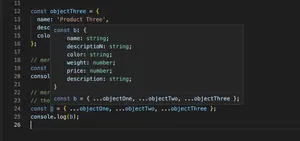Overview
TypeScript’s type inference mechanism can often seem like a clairvoyant, divining the intentions behind your code with prophetic precision. Yet, its inference of generic types remains shrouded in a mist of questions for many developers. This journey aims to demystify this aspect of TypeScript, demonstrating its power through graduated and practical examples.
Introduction to Generics
In TypeScript, like the mighty Mississippi flows unerringly to the sea, so do generic types allow for robust and reusable code. Generics enable us to write a component or function that can work over a variety of types rather than a single one, marking the spot where any type can land much like a treasure map awaits its X.
function identity<T>(arg: T): T {
return arg;
}
Here, <T> symbolizes a generic or placeholder type. It charts a course for the function to securely navigate any type you provide.
Basic Inferred Generics
In TypeScript’s vast wilderness, specifying generic types can be akin to erecting a tent without instructions; use inferred generics, and TypeScript erects it for you, as if carried by the wind.
let myIdentity = identity('Mark');
// Inferred type is string
Not a stone’s throw away, TypeScript discerns 'Mark' to be a string and assigns string to T without fuss or fanfare.
Working with Constraints
Just as a steamship needs a sturdy hull to sail, generic constraints ensure that your types hold water.
function loggingIdentity<T extends { log: () => void }>(arg: T): T {
arg.log();
return arg;
}
Should you try to invoke loggingIdentity with an argument lacking the log method, TypeScript, the ever-vigilant sentinel, raises an alarm.
Using Type Parameters in Generic Constraints
A map detailing how two types relate is more valuable than gold. Type parameters can guide generic constraints to form an alliance between types.
function getProperty<T, K extends keyof T>(obj: T, key: K) {
return obj[key];
}
This veritable cartographic feat allows a generic function to associate types T and K like a steamboat captain matching the stars with his charts.
Interface and Generics
Just as the outline of a great river defines its journey, so do interfaces craft the very structure of the types we navigate.
interface Backpack<Type> {
add: (obj: Type) => void;
get: () => Type;
}
An interface bearing generics upholds a protocol; it becomes a flexible blueprint for any cargo you wish to carry within your code.
Advanced Generic Patterns
Sometimes, like the storied gambit in a game of riverboat poker, TypeScript requires a masterstroke.
type LinkedList<Type> = Type & { next: LinkedList<Type> | null };
function traverseList<Type>(node: LinkedList<Type>) {
while (node) {
console.log(node.value);
node = node.next;
}
}
Here, a recursive type model sculpts a finely wrought pattern as elegant as its practicality is profound.
Conclusion
Steering through the nuance of TypeScript’s inferred generics is akin to navigating the twists and turns of the mighty Mississippi. With an intuitive touch on the wheel, TypeScript’s generics obey your command, mould to your purpose, and course through your projects with a powerful ease. It’s a tool that, when mastered, ensures that your code can adapt to an infinite variety of uses, as versatile and resourceful as a riverman’s craft.
